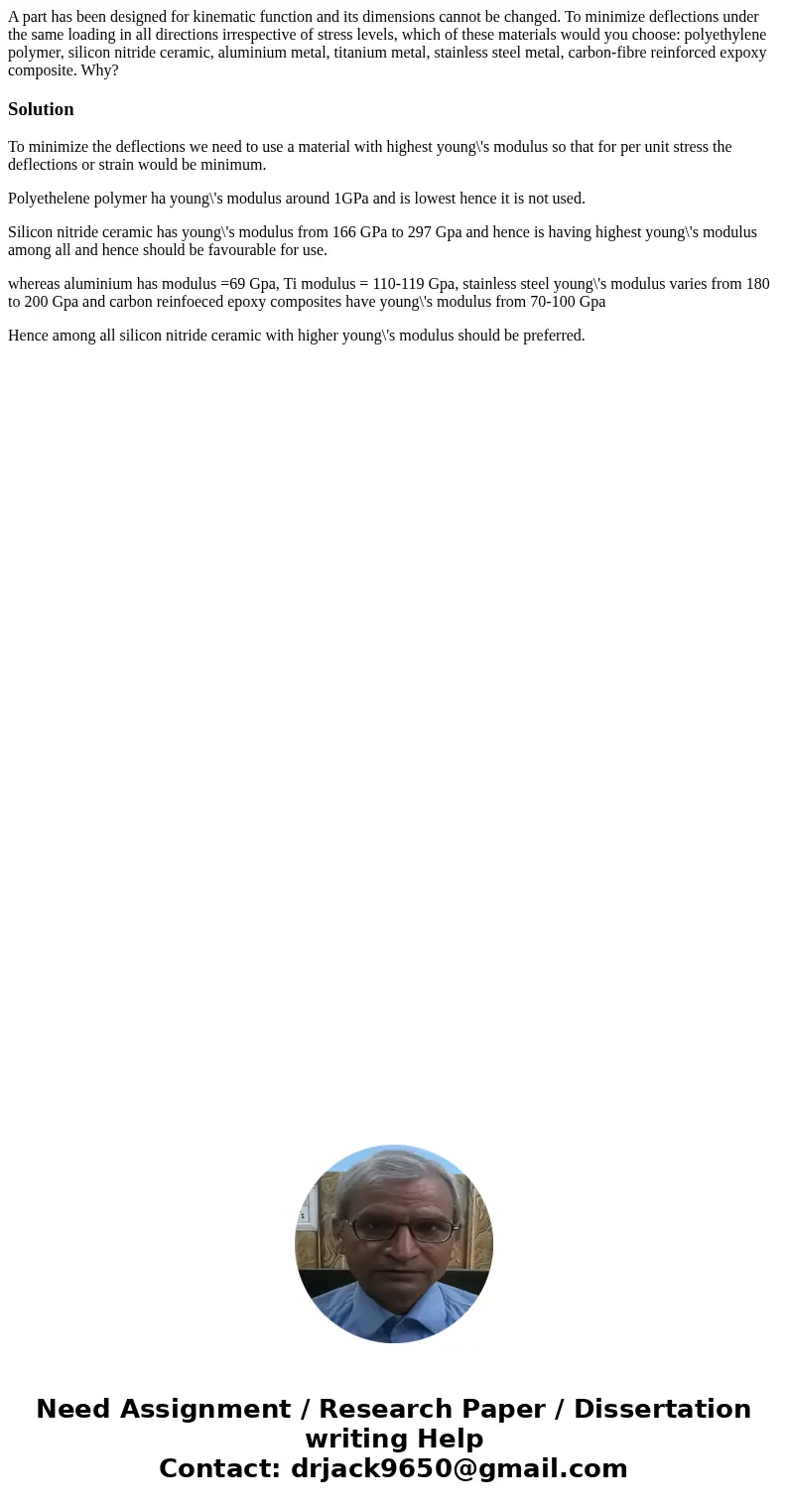A part has been designed for kinematic function and its dime
A part has been designed for kinematic function and its dimensions cannot be changed. To minimize deflections under the same loading in all directions irrespective of stress levels, which of these materials would you choose: polyethylene polymer, silicon nitride ceramic, aluminium metal, titanium metal, stainless steel metal, carbon-fibre reinforced expoxy composite. Why?
Solution
To minimize the deflections we need to use a material with highest young\'s modulus so that for per unit stress the deflections or strain would be minimum.
Polyethelene polymer ha young\'s modulus around 1GPa and is lowest hence it is not used.
Silicon nitride ceramic has young\'s modulus from 166 GPa to 297 Gpa and hence is having highest young\'s modulus among all and hence should be favourable for use.
whereas aluminium has modulus =69 Gpa, Ti modulus = 110-119 Gpa, stainless steel young\'s modulus varies from 180 to 200 Gpa and carbon reinfoeced epoxy composites have young\'s modulus from 70-100 Gpa
Hence among all silicon nitride ceramic with higher young\'s modulus should be preferred.

 Homework Sourse
Homework Sourse